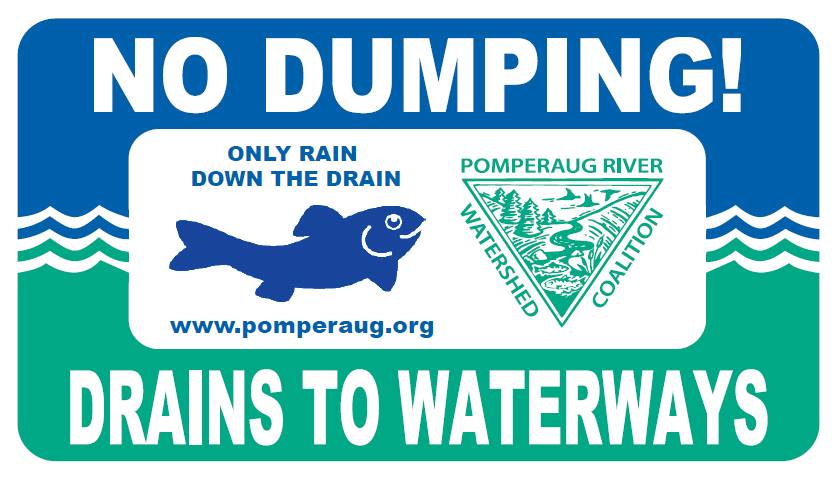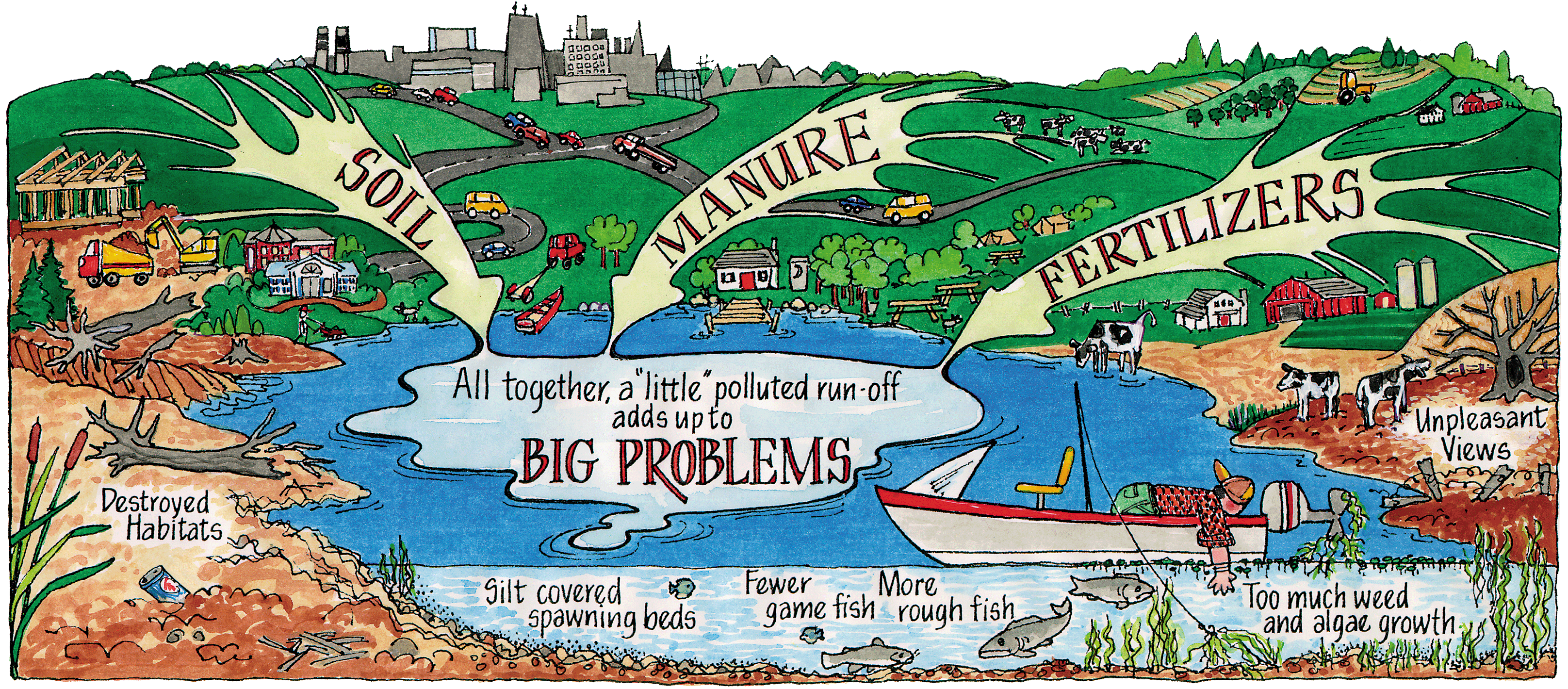What is that "sticker" on the stormdrain?
- pomperaugriver

- Jul 16, 2019
- 3 min read
In keeping with PRWC's mission of public outreach and education, in 2013, we began efforts to implement a Stormdrain Marking Project. Since then, our team has installed more than 2250 "stickers" onto selected stormdrains (a.k.a. catch basins) in the Woodbury, Southbury, Bethlehem, and Watertown. Stormdrains marked in this effort were selected based on their proximity to local streams areas classified as impaired by the Connecticut Department of Energy and Environmental Protection. They were also selected for their overall visibility, focusing on those located in residential areas or along popular foot and bicycle traffic routes.
Thanks to a recent grant from FirstLight Power Resources, PRWC was able to purchase an additional 1000 stormdrain markers that our Youth Conservation Corps crew is working to install this summer. Volunteers are also welcome to assist in this project. If you or a group of volunteers are interested in helping, please contact us at outreach@pomperaug.org or 203-263-0076. Volunteers will be given all the necessary supplies and assigned a segment of road. This is a great opportunity to get out and explore new areas.
What does the stormdrain marker do?
The 3-by-5-inch placard installed on the curb above the drain simply reminds residents to watch what flows into the drains because they carry stormwater runoff into local waterways. In effect, the markers provide a gentle prompt to not dump anything down the drain and that that only plain rain should go down the drain and because of the connection to nearby rivers and streams.
What is Stormwater Runoff?
Stormwater runoff is generated when water from rain and snowmelt events does not soak into the ground and, instead, flows over the land’s surface. The addition of roads, driveways, parking lots, roof tops, and other impervious surfaces to our landscape greatly increases the runoff volume created during storm as these surfaces prevent water from soaking into the ground.
How Does Stormwater Become Polluted?
When stormwater flows over our lawns, driveways and parking lots, it picks up fertilizers, oil, chemicals, grass clippings, soil/sediment, litter, pet waste, and anything else in its path and transports these pollutants into the storm drain system or runs directly into nearby waterway.
What are Storm Drains?
Storm drains are the openings you see along curbs and in streets and parking lots. They collect stormwater and transport it through a system of pipes to nearby ponds, lakes and streams, and ultimately to Long Island Sound. Storm drains do not lead to a treatment facility. Anything that goes into a stormdrain eventually ends up in our waters.
How Does Polluted Stormwater Harm Rivers, Streams, Ponds, Wetlands, Etc?
The health of our water resources depends on the quality of water that flows through them. To care for a stream, river, wetland, pond or other water body, we must also care for the land that drains to it – its watershed.
Everything in the watershed affects the water in the stream. Hazardous chemicals, automotive products, pesticides, fertilizers, pet wastes, excessive soil erosion and air pollution all contribute to water pollution. These pollutants don't have to be dumped directly into the water to cause a problem. They are washed from streets, lawns, roofs and even out of the air by rainfall—eventually ending up in wetlands, streams and lakes.
Resulting impacts of water pollution can range from the obvious, such as oil floating on the water to losses of wildlife due to habitat destruction that often goes unnoticed. When too many pollutants are carried to our water ways, they may become unsafe for swimming and other types of recreation (example - too much bacteria) or may be unable to support aquatic life (example – too much sediment filling in essential habitat).
How can you help reduce stormwater runoff?
Everyone has a part in protecting our watershed and preventing water pollution. While the contribution of one home to water pollution may be small, the combined effect of an entire neighborhood or city can be substantial. We ask that you, as a member of this watershed community, take an active role in minimizing stormwater pollution. The first step is to educate yourself on what stormwater pollution is, and where it comes from. Then, take action. Here are some everyday actions that can help improve water quality:
Use less fertilizers and pesticides on your lawn
Don’t litter
Properly dispose of pet waste
Recycle used motor oil and antifreeze
Take hazardous household materials to authorized collection sites
Wash your car on the lawn and use a vegetable based liquid soap - or bring it to a commercial car wash
Limit sand and salt use
Visit the Be RiverSmart website to learn more and to take the RiverSmart Pledge today!






















